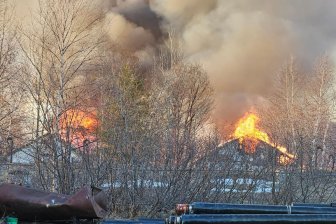Watch video above: Despite the campaign, Toronto’s littering bylaws are rarely enforced. Mark McAllister reports.

TORONTO – It’s time for some Spring cleaning.
The city launched its annual Clean Toronto Together campaign Friday afternoon at city hall. Mayor Rob Ford encouraged individuals and businesses alike to step up and clean up city streets.
The campaign aims to clean city streets of garbage and litter not picked up over the winter season. There’s likely to be more to pick up this year than in recent years, because of the ice storm that left tree branches and debris across the city.
“Last year there were over 3600 tons of litter picked up by the city and another 3000 times picked up by private forces,” Toronto’s director of transportation Peter Noehammer said. “We expect this year that number to almost double just because of the amount of debris. The small twigs and branches that are still on the boulevards from the ice storm.”
The city’s cleanup effort consists of 50 vacuums, 45 sweepers, 20 front-end loaders, 50 stake trucks, 11 collection trucks and 60 pickup trucks.
“It’s going to be concentrated over a six-week period starting this week,” Noehammer said. “Basically six weeks going into the middle of May.”
As for garbage on the streets, while it is illegal to litter, it is difficult for the city to fine anyone. The offender would have to be caught in the act, charged and then convicted before a fine could be levied.
- Iran fires air defences at military base after suspected Israeli drone attack
- U.S. aid to Ukraine, Israel set to pass. But bills differ in one key area
- Senator references ‘Trumpian denialism’ in foreign interference debate around China
- Carbon rebate labelling in bank deposits fuelling confusion, minister says
Noehammer said the city is more concerned with illegal dumping – bags of garbage, building materials left on the side of the road – than littering.
But the good news? The city is getting cleaner, according to a city of Toronto audit. The examines garbage left on the street every few years, with the most recent report completed in 2012.
That report analyzed 298 sites and counted two separate categories; large and small litter.
They found less large litter: 3,433 pieces, down from 4,341 in 2006. Miscellaneous paper and plasticmade up the two most numerous pieces of large litter.
And the report counted 67 per cent less small litter than there had been in 2006. That is complosed mostly of cigarette butts and gum litter.
– With files from Mark McAllister



Comments